Behind the Scenes: A Botanical Survey of Castle Rock Hollow
A Botanical Survey of Castle Rock Hollow
The redwood forests of the Santa Cruz Mountains are complex, interconnected systems nurturing countless species of plants and wildlife in addition to the redwood giants themselves. Sempervirens Fund’s work preserving and protecting the redwoods of this region must also include stewardship 1 of the surrounding lands and watersheds, because the health of redwoods depends on the health of the entire ecosystem.
Among our strategies to support redwood forest restoration is to inventory the plant life among the trees. We recently surveyed an unusual meadow ringed by redwoods on a property we are restoring near Castle Rock State Park. Learn more about what we discovered.
Assessing Forest Health
One of the tools we utilize to assess the health of redwoods and their environs is the botanical survey. Our Land team partners with contract botanists and ecologists to gain insights into what types of stewardship efforts a particular area might need to better thrive. At a micro level, the well-trained eyes of these scientists look down at the ground to identify what species are notably present and absent. At a macro level, they identify the overall strengths and opportunities of the property and of the habitat. Together, these micro and macro assessments help inform our conservation and restoration efforts.
With your help, Castle Rock Hollow was acquired by Sempervirens Fund in 2021. Its 51-acres of forest bordering Castle Rock State Park had been zoned for commercial timber harvest, and yet we saw a much brighter future for this property. It was one of the last remaining inholdings to be acquired within Castle Rock State Park, and after restoration work, we envision an opportunity to transfer it to California State Parks so that it might be added to the Park itself. At the same time, we hope it will also enable a realignment of the Skyline-to-the-Sea Trail away from the main road and provide a potential new camping site. Its protection will also support the ongoing health of the entire forest and the flora and fauna that rely on it.
Surveying a New Property
Sempervirens Fund facilitated a recent botanical survey of Castle Rock Hollow with the goal of understanding the macro-habitat of the property to then prepare a stewardship plan to enable an eventual handover to the State Park system. At prior visits here, the team had been curious about the history and health of a distinctive meadow. The Castle Rock Hollow meadow is a hotbed of biodiversity. The wildlife camera we installed has captured mountain lions, deer, and more in the meadow, and a variety of flowers and grasses abound. In addition, there has been much speculation among the team about the history of the meadow. The presence of plants that are known to have been beneficial to Indigenous Peoples, such as yarrow and soaproot, have some convinced that the meadow was deliberately cleared and cultivated. During our survey day, Consulting Ecologist Matt Marshall of Ecological Concerns Inc. (ECI) 2 joined Sempervirens Fund’s Land Stewardship Associate, Chris Lopez, a day of further investigation and learning.
The primary visible evidence of ECI’s work in the meadow so far were piles of invasive bamboo and French broom that had been cleared. This work of removing invasive plants is done through hand pulling to ensure roots are removed and so that desired native plants are left undisturbed. “A healthy native meadow is only about 5-10% native cover,” Matt shared. “Grasslands are the most invaded habitat type,” he continued, and native cover is rare because invasives take over with their high germination rates and more rapid growth than natives.

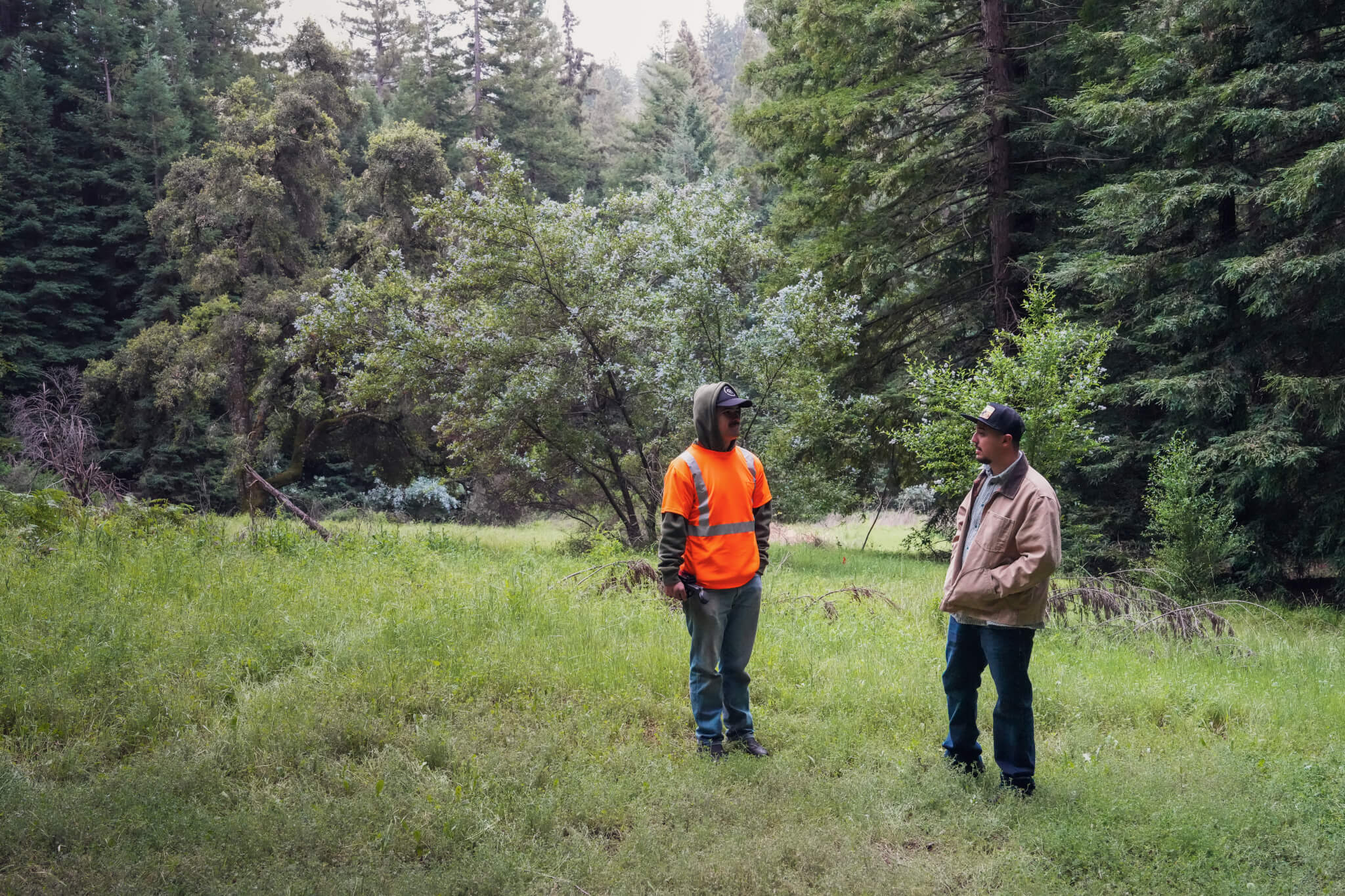
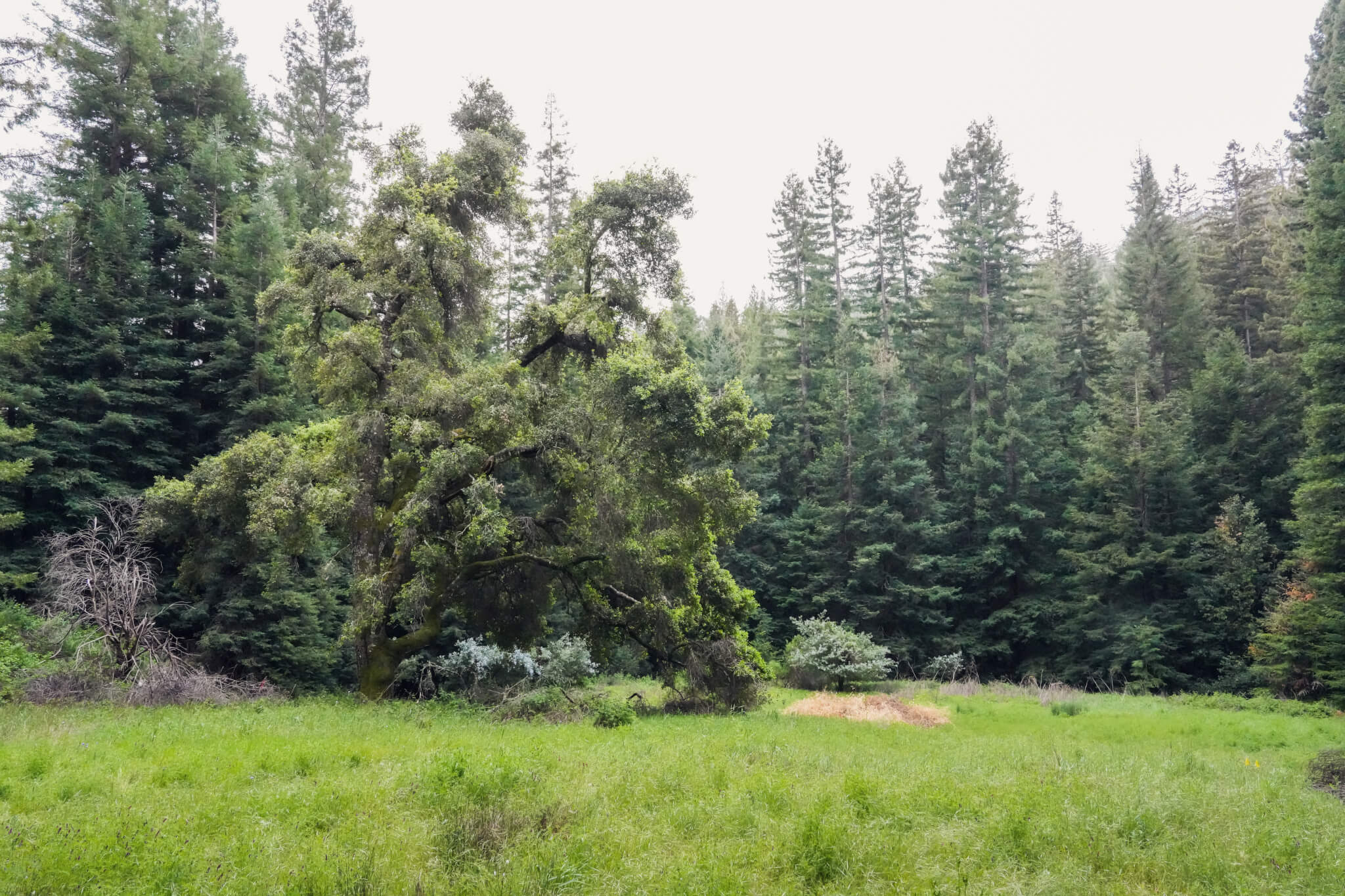
Botanical Survey Image Gallery
Do you know which plants are native vs. non-native?
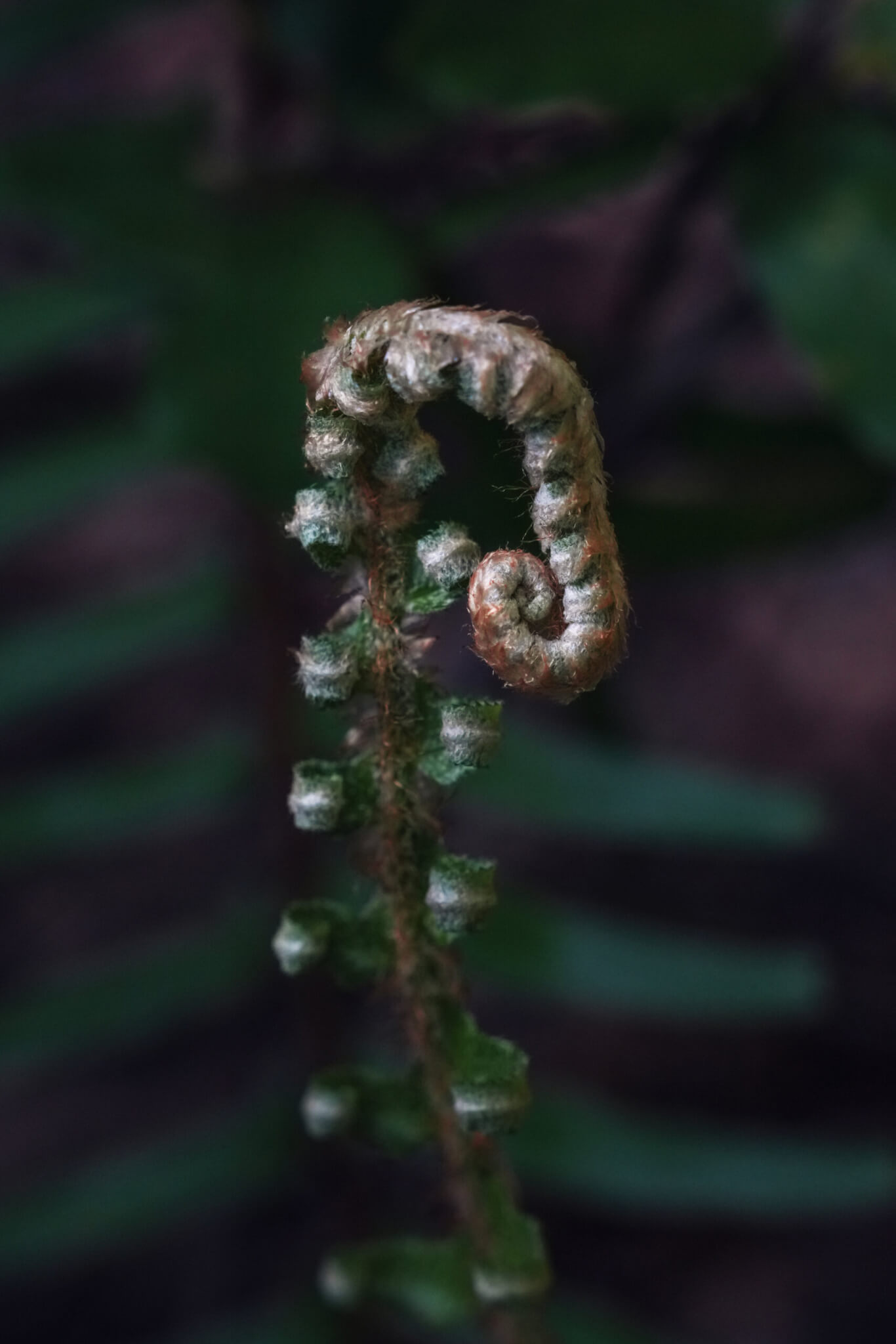
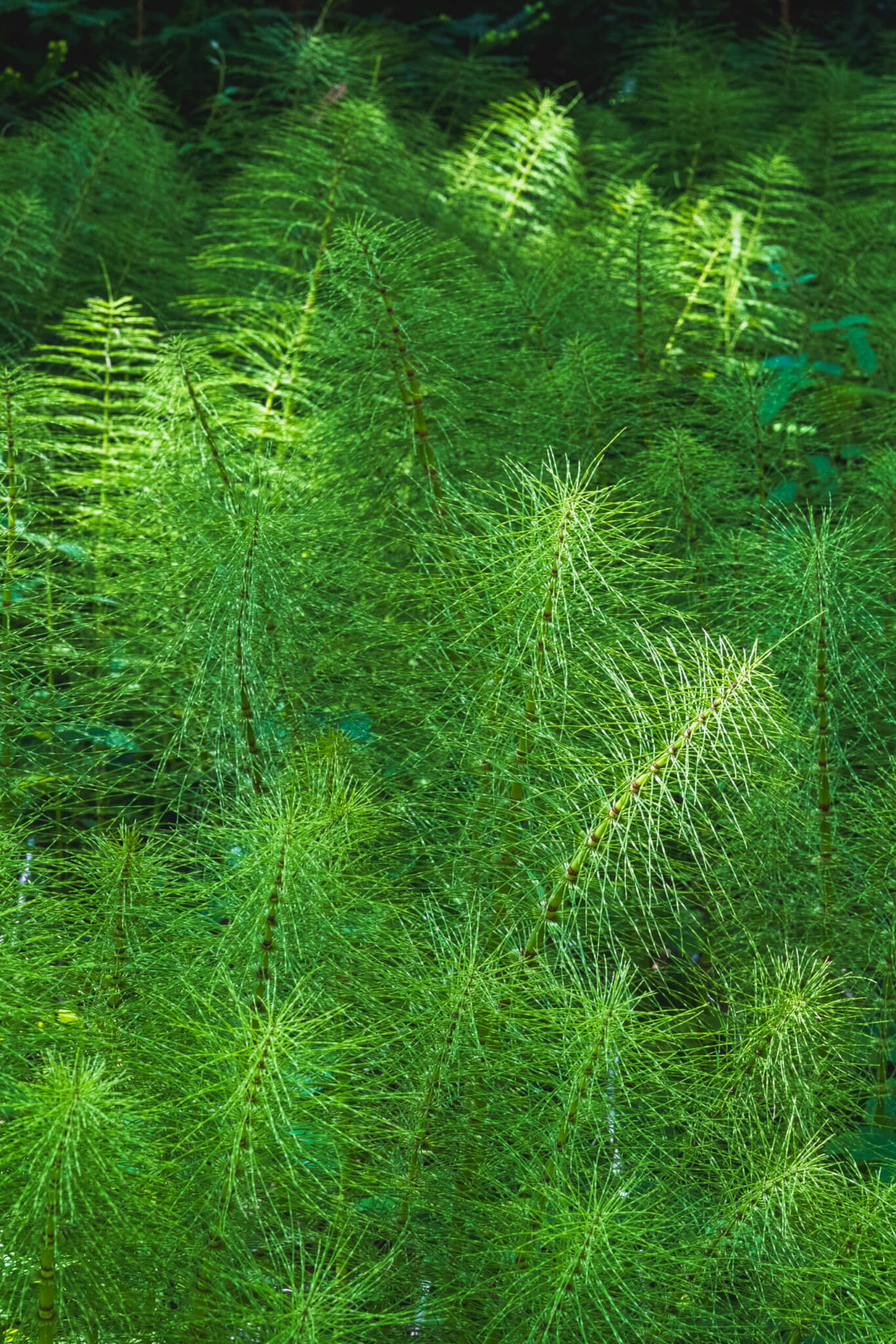
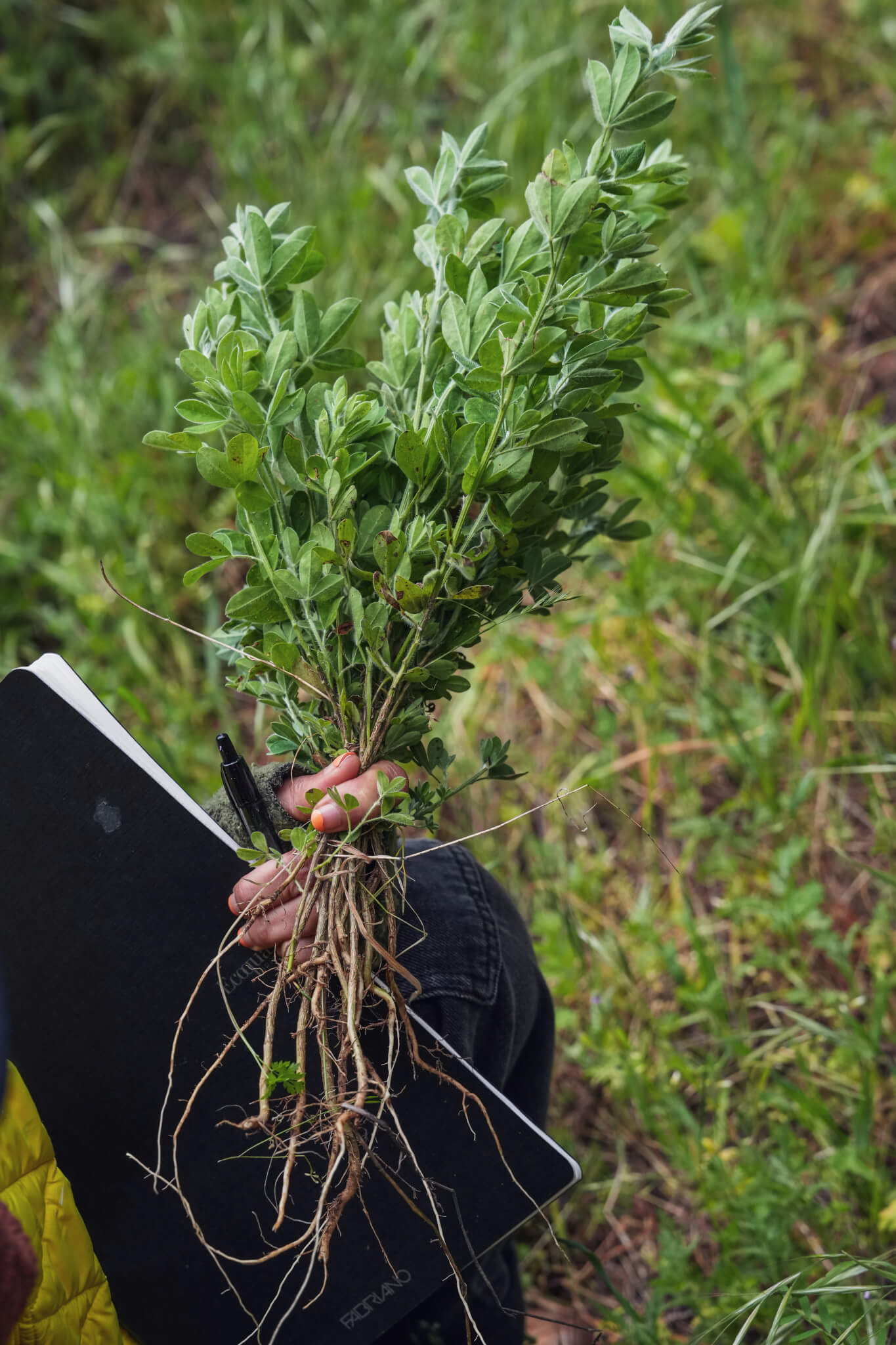
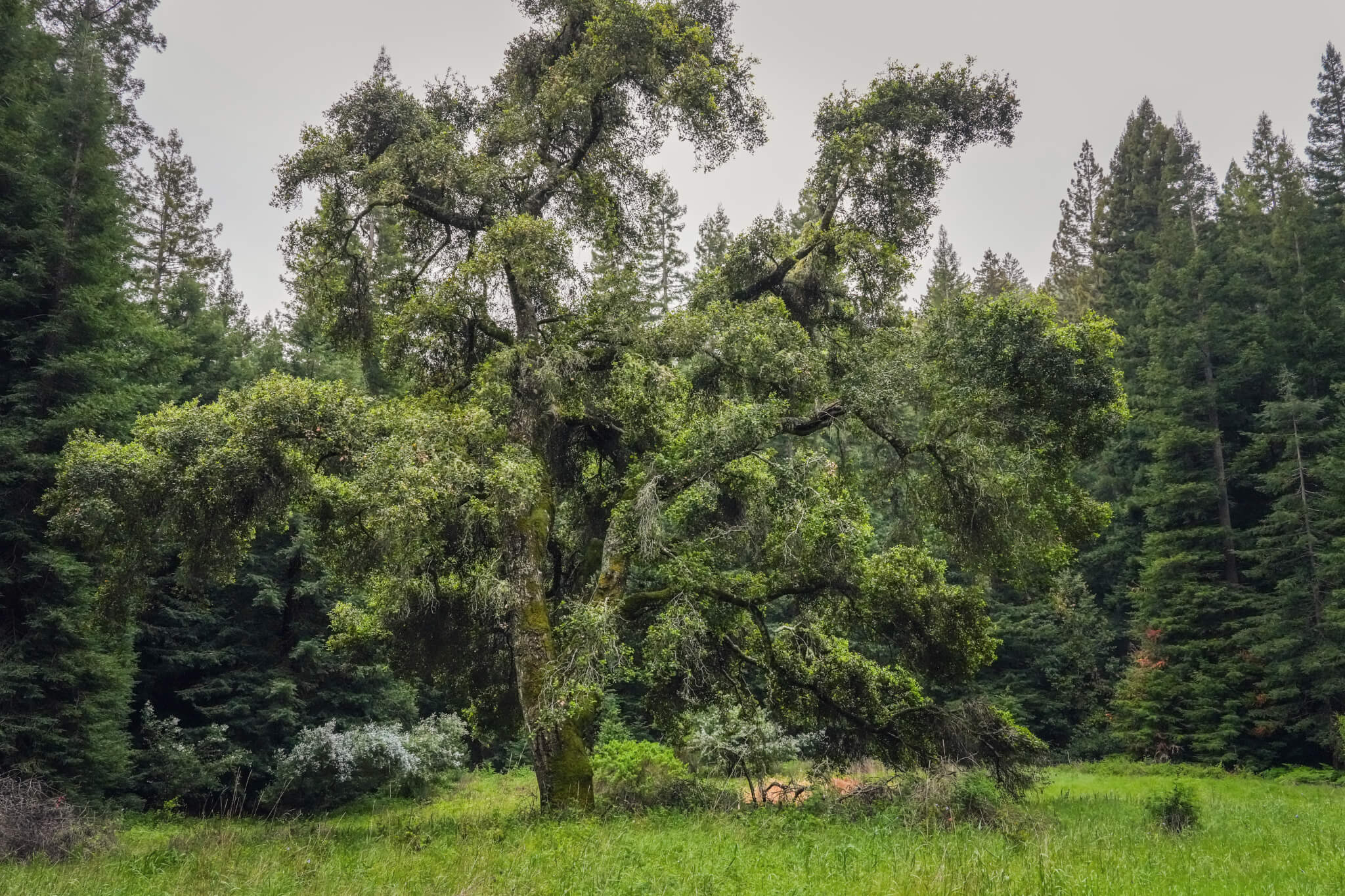
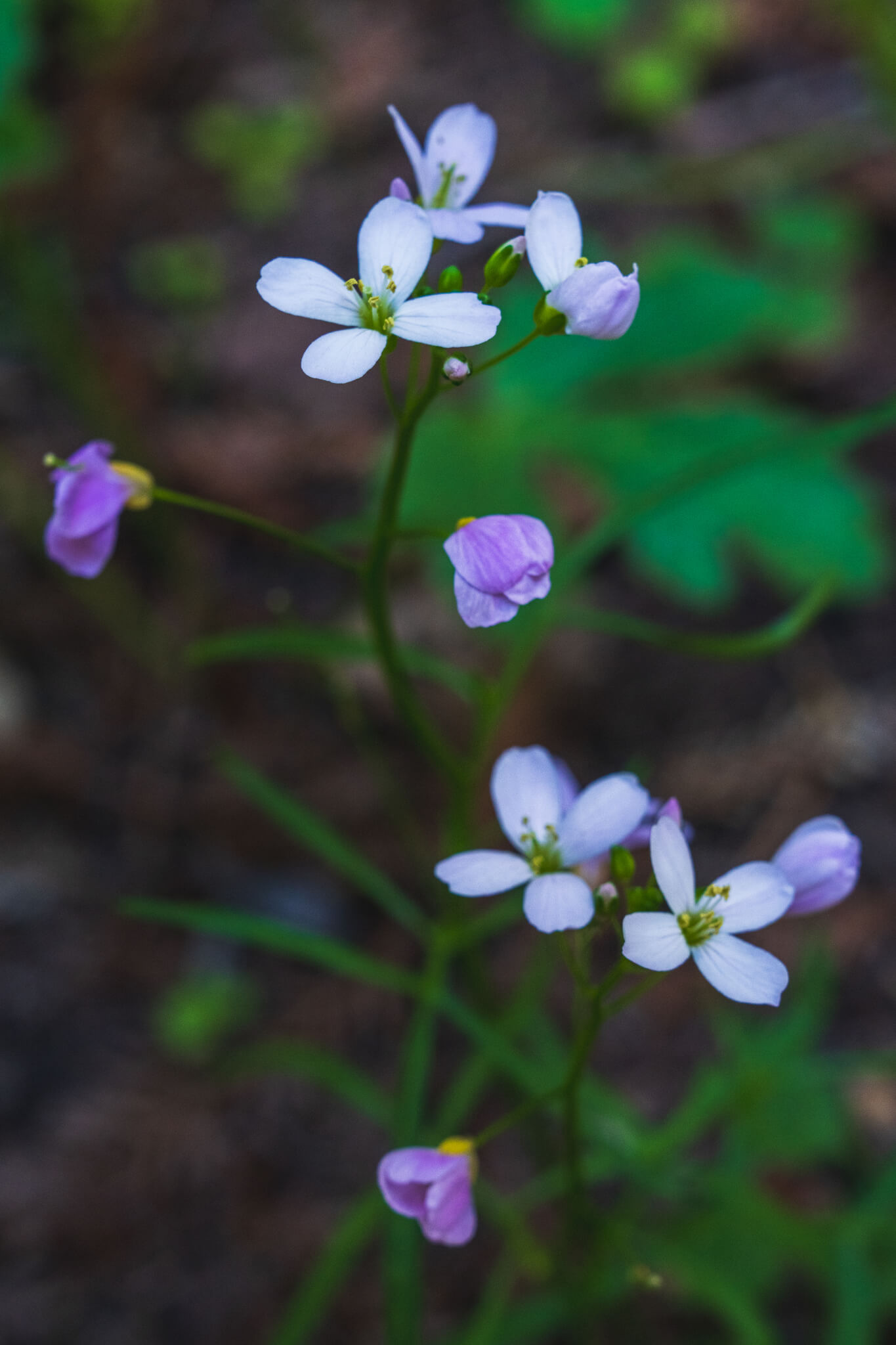
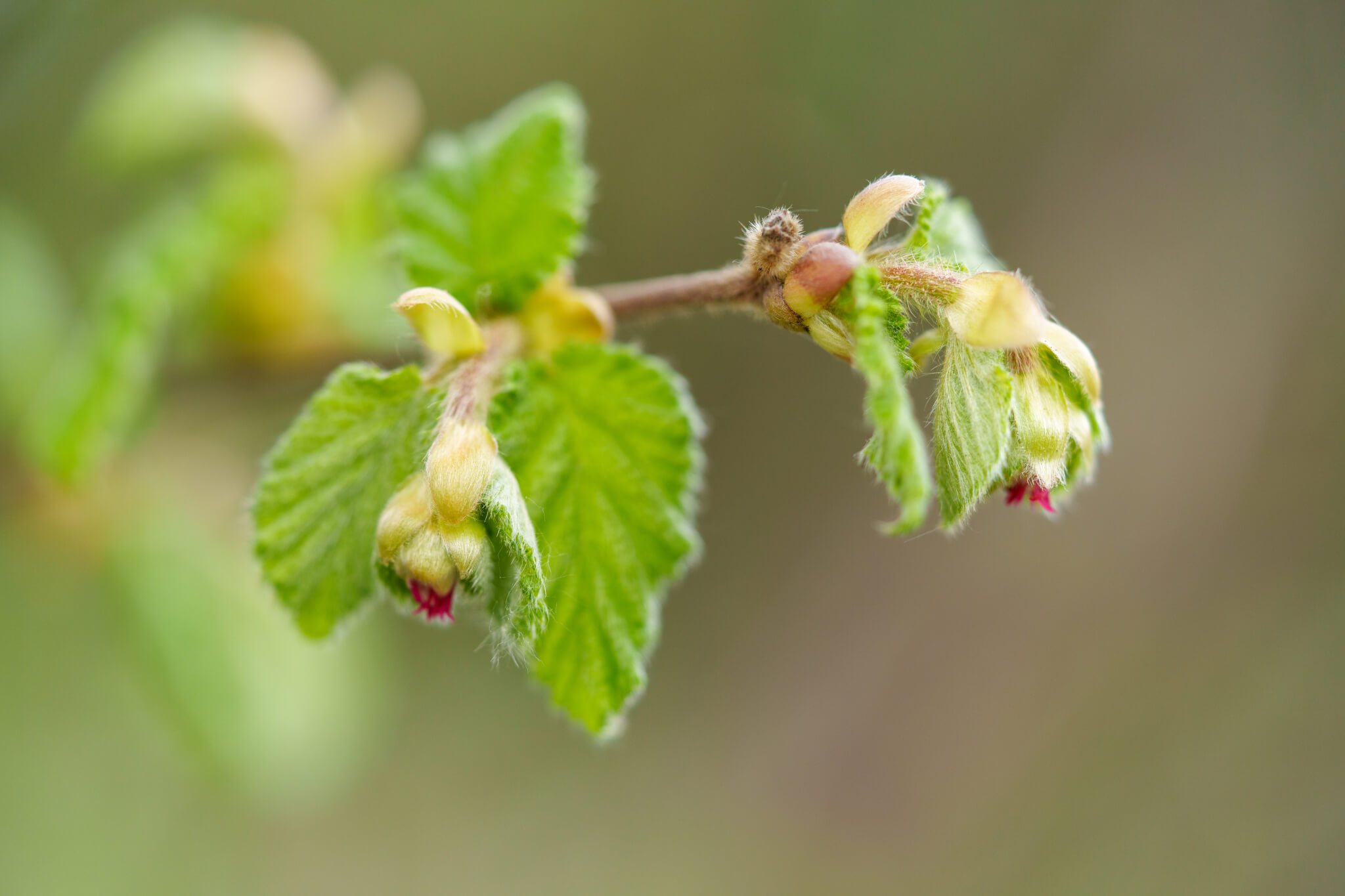
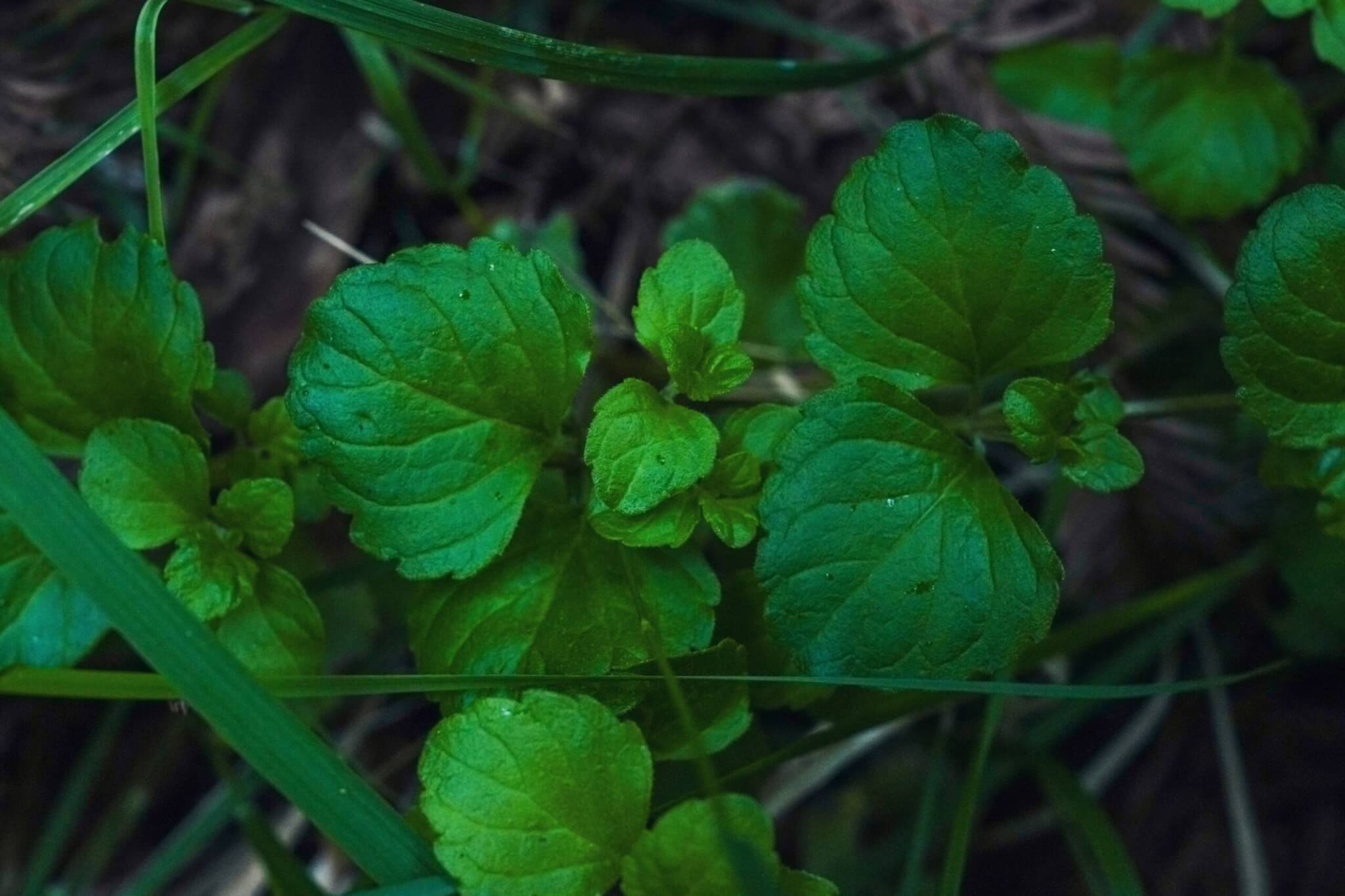
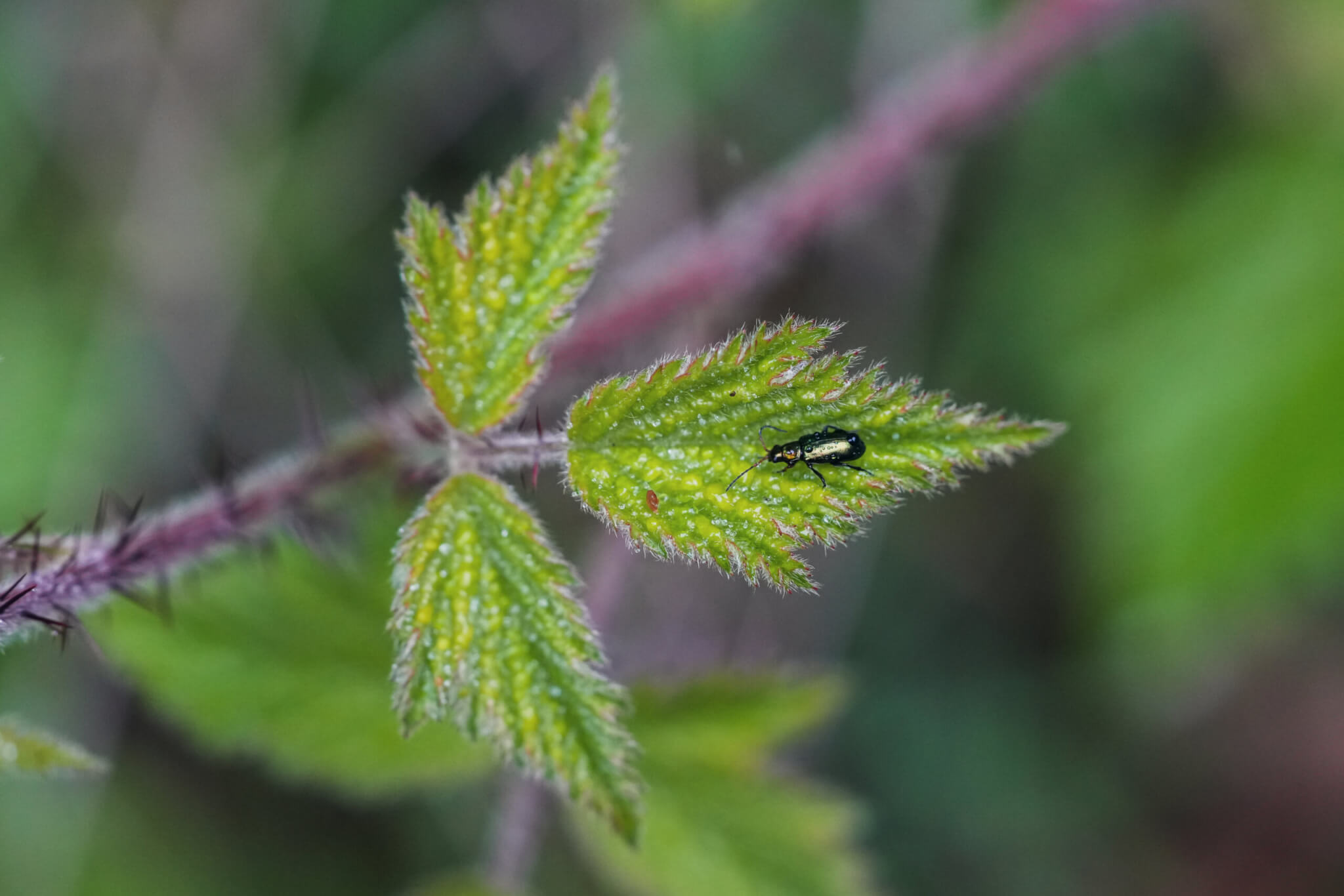
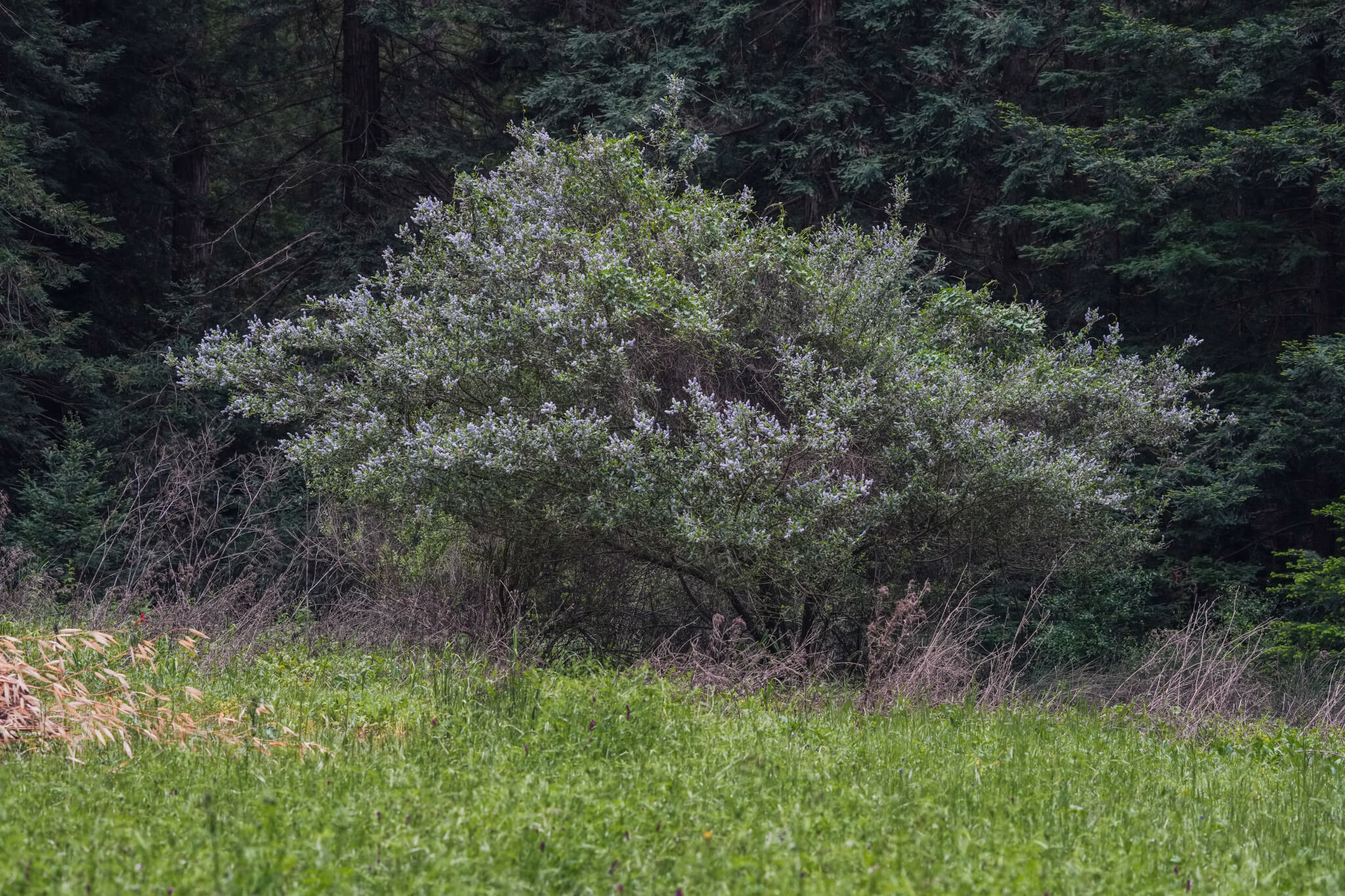

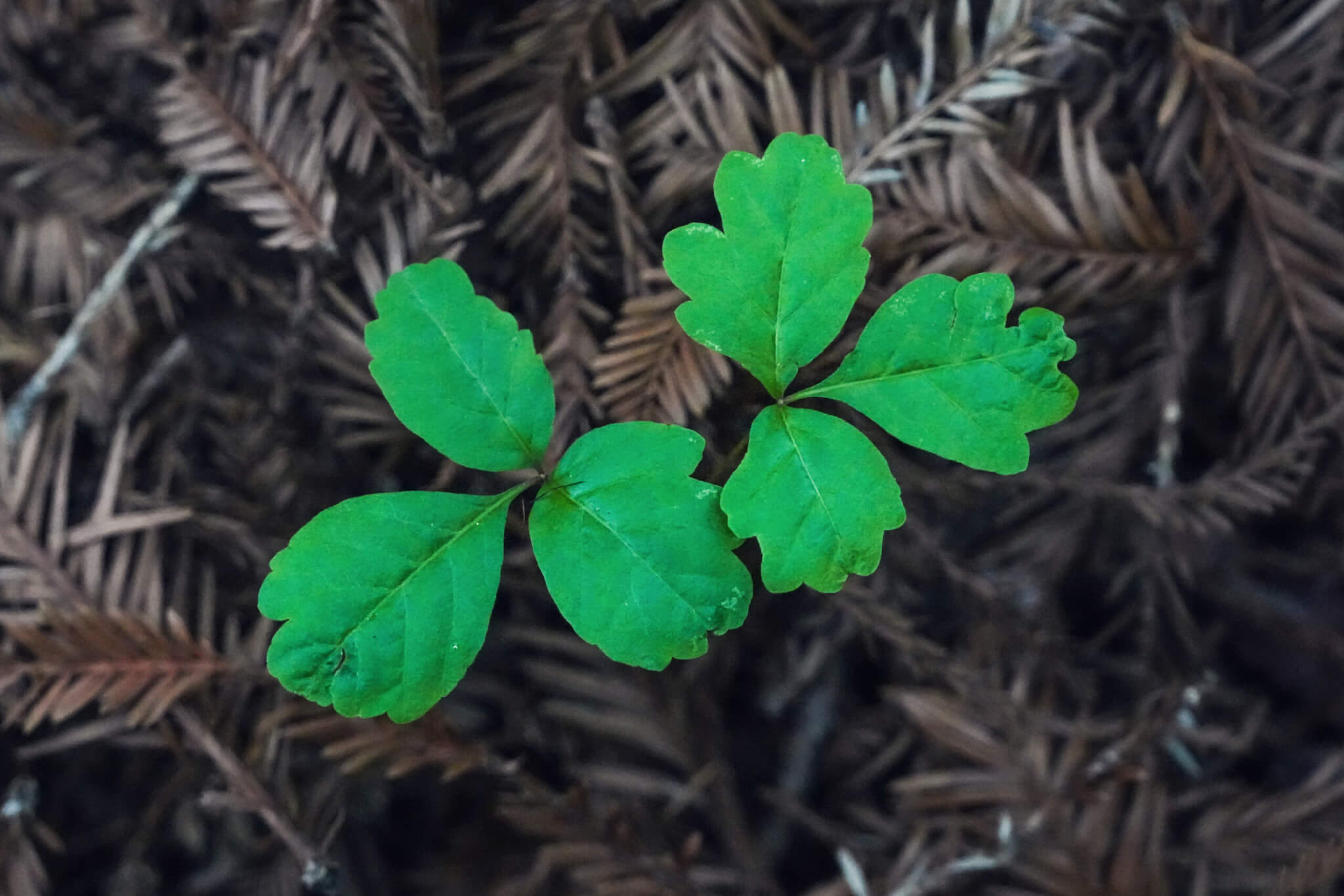
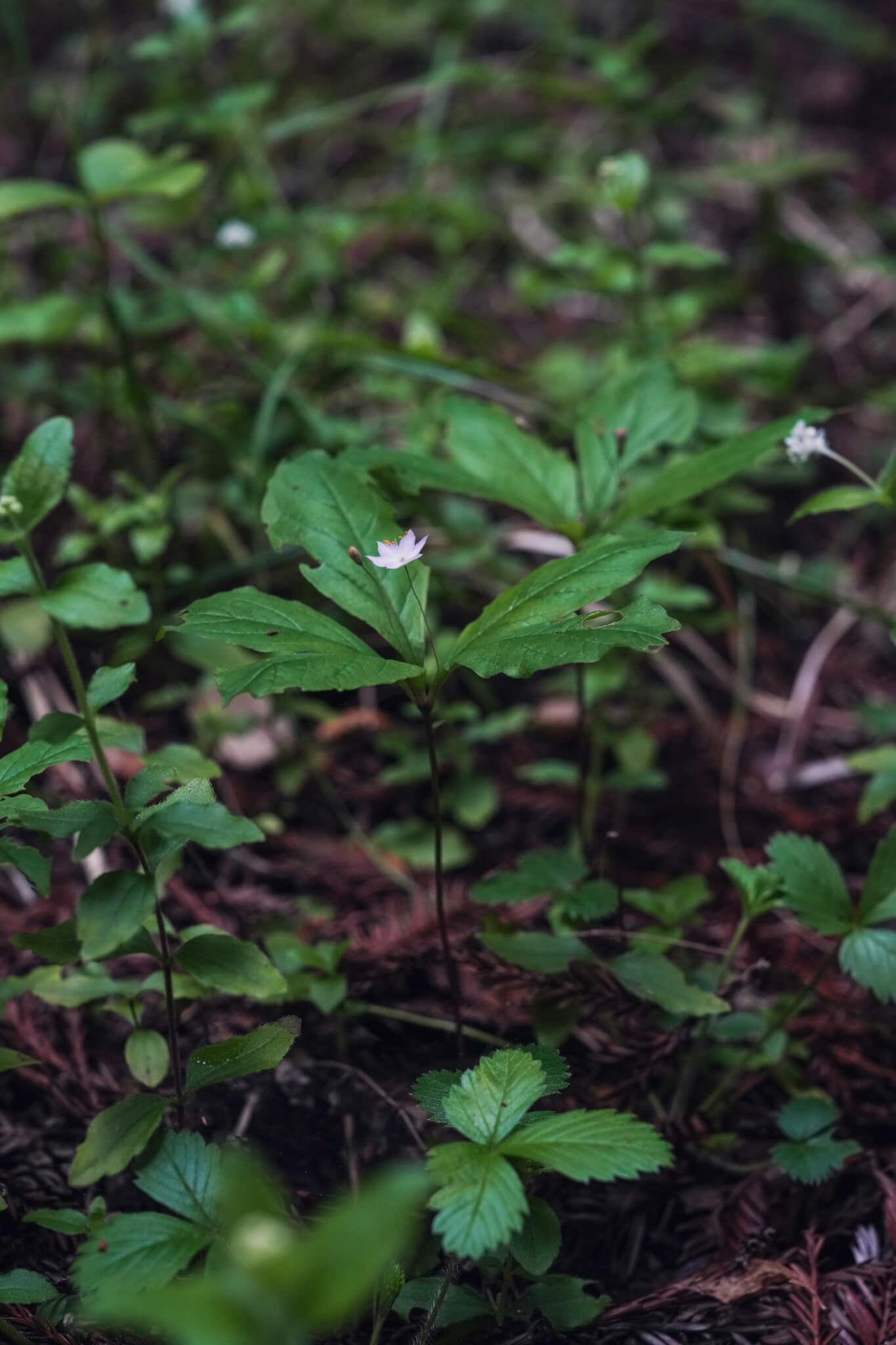
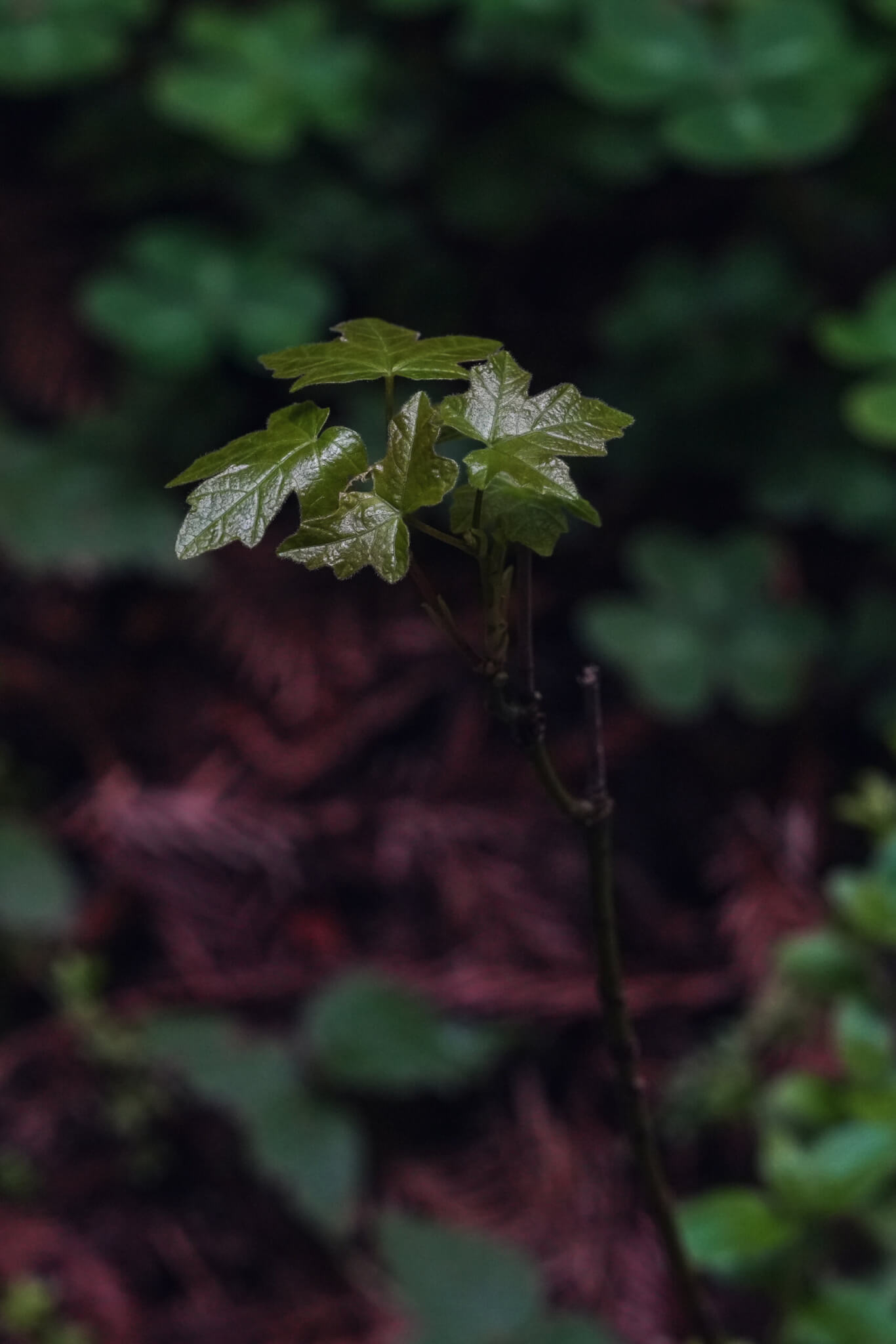
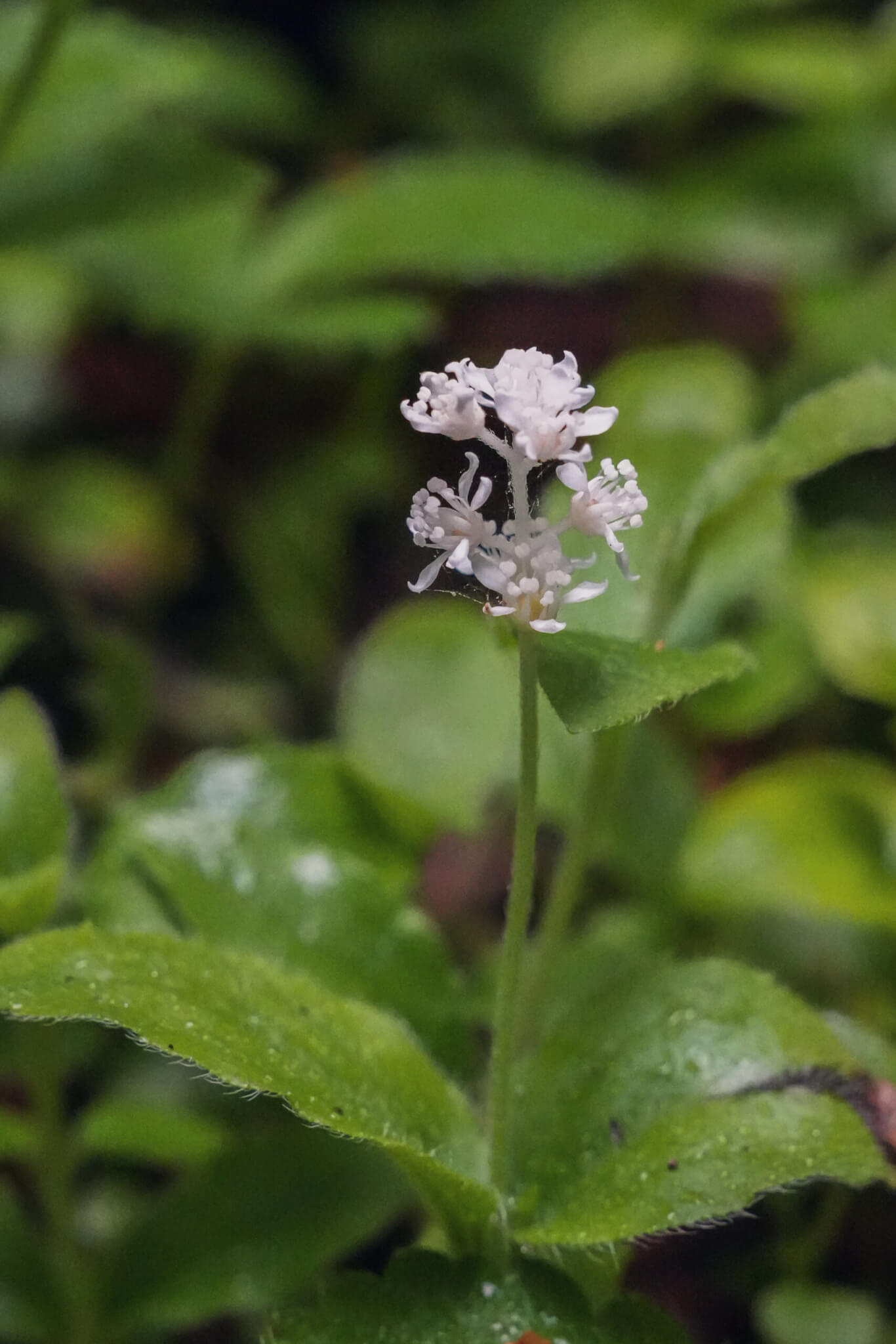

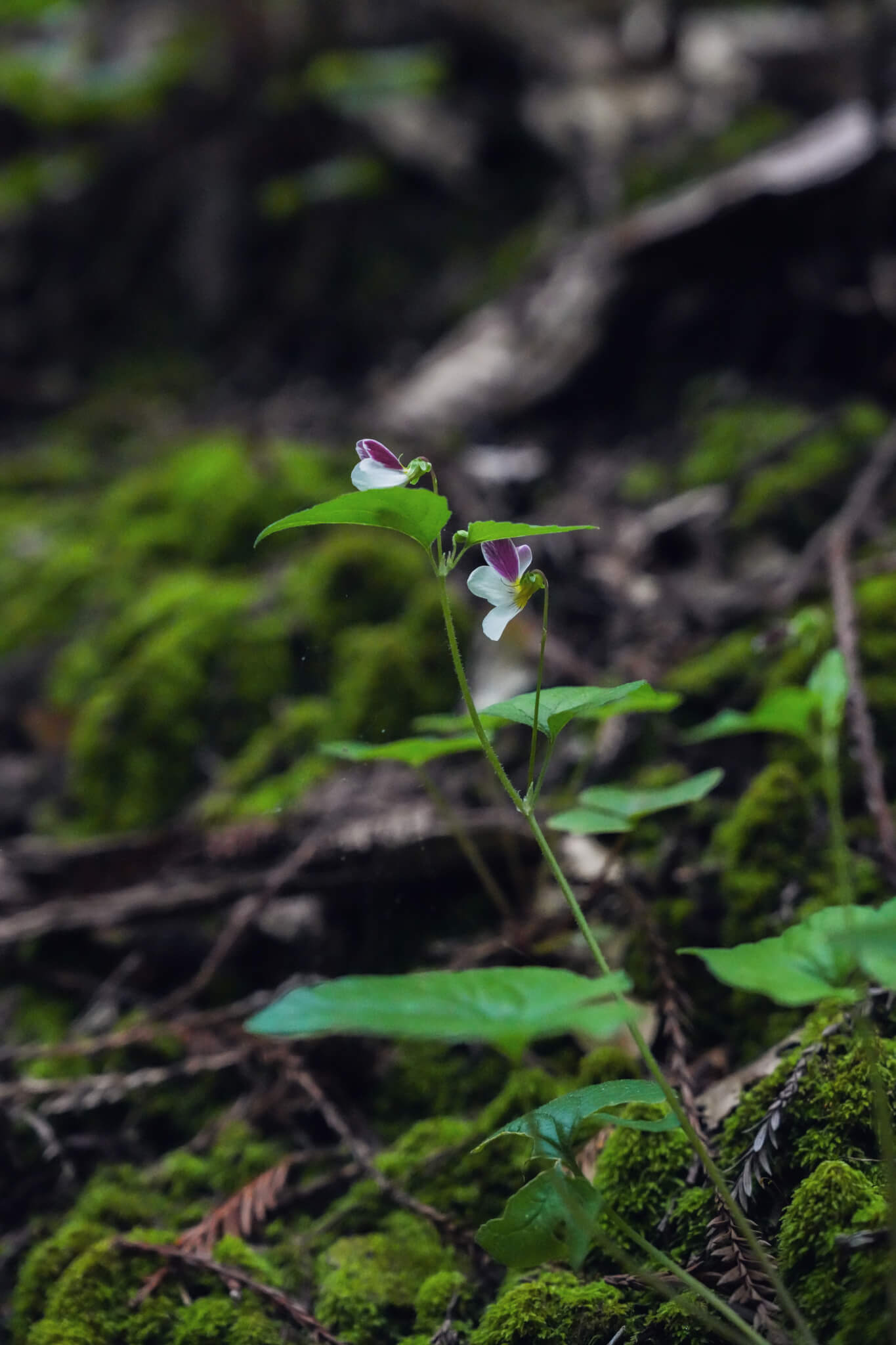
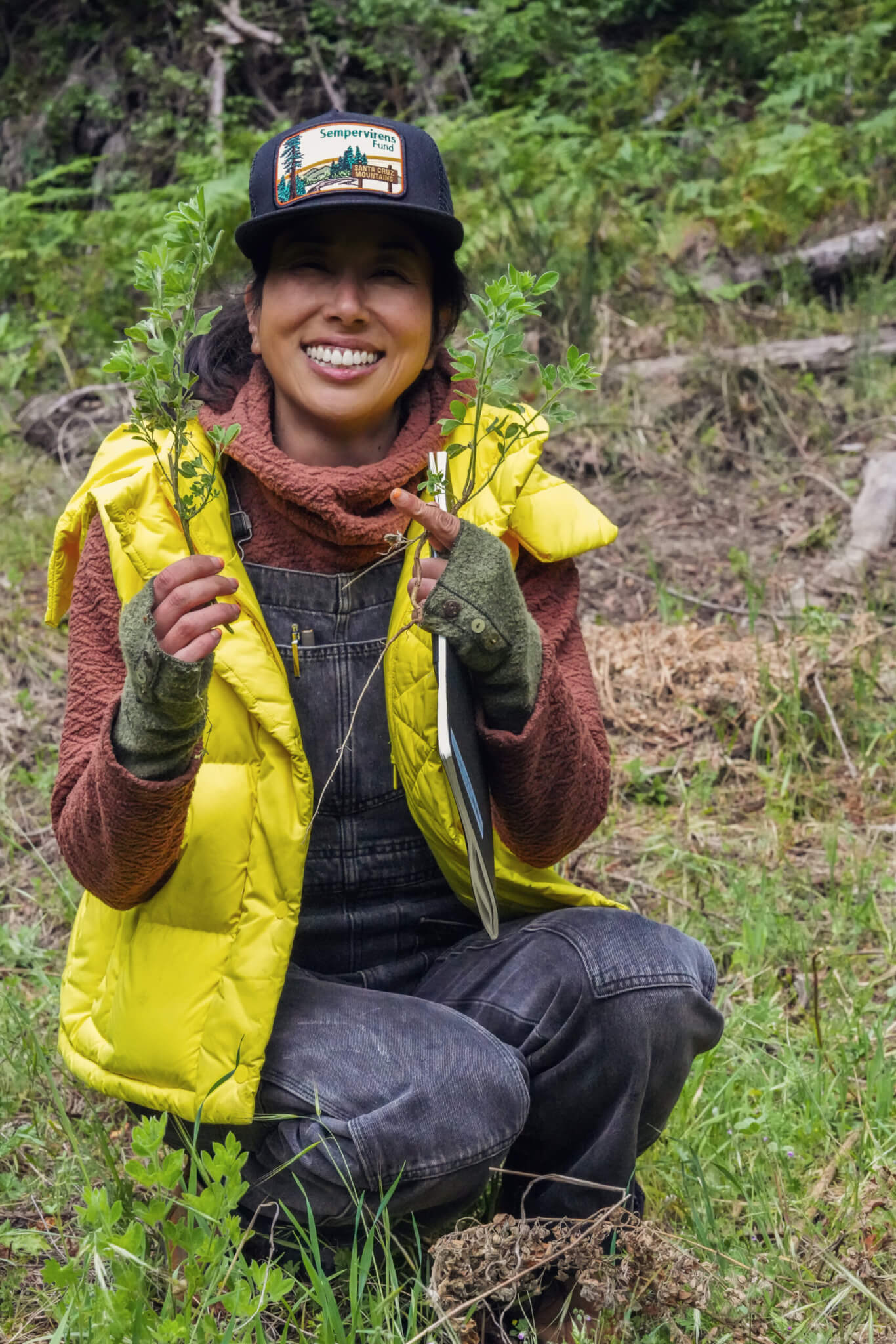
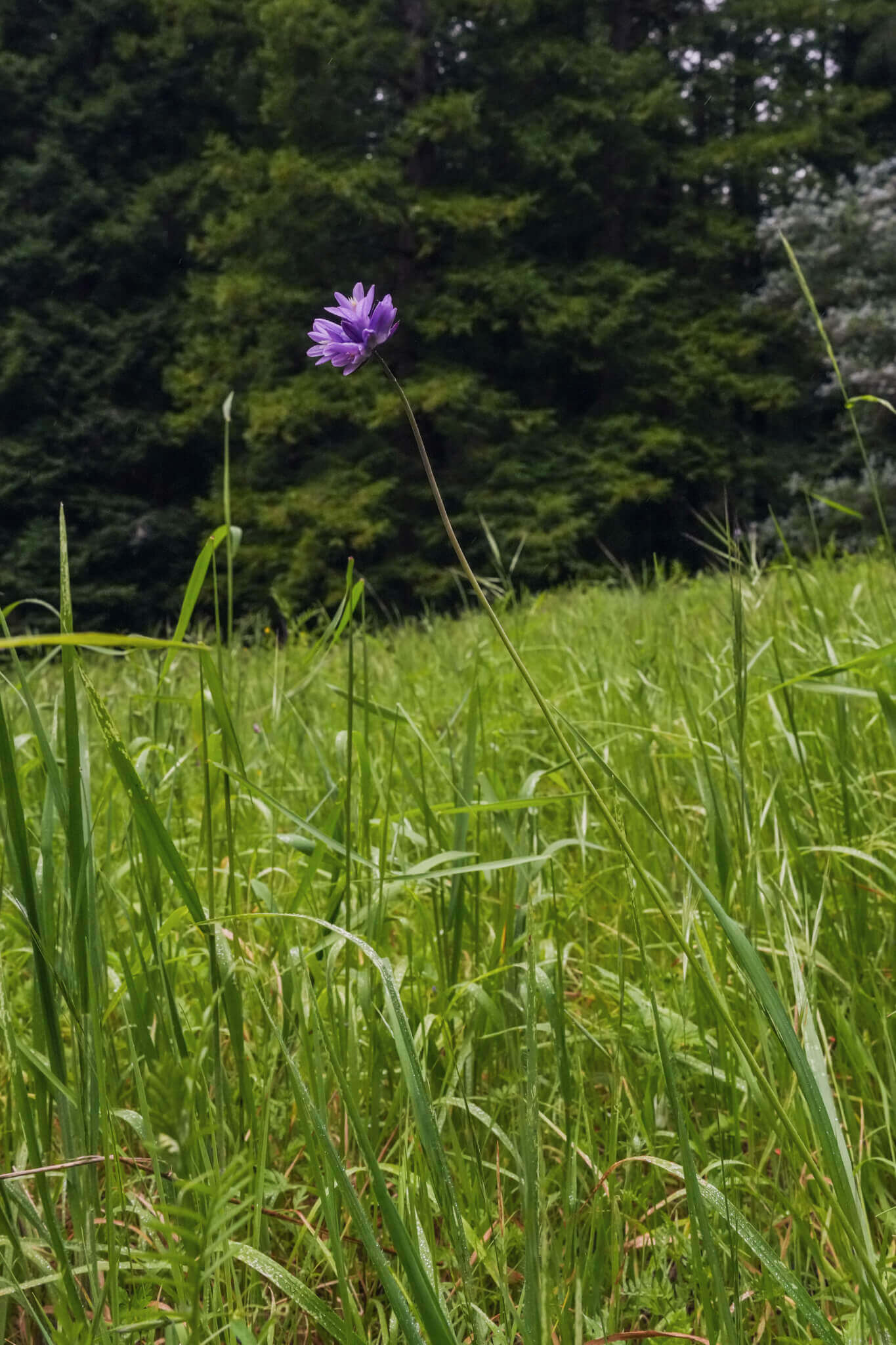

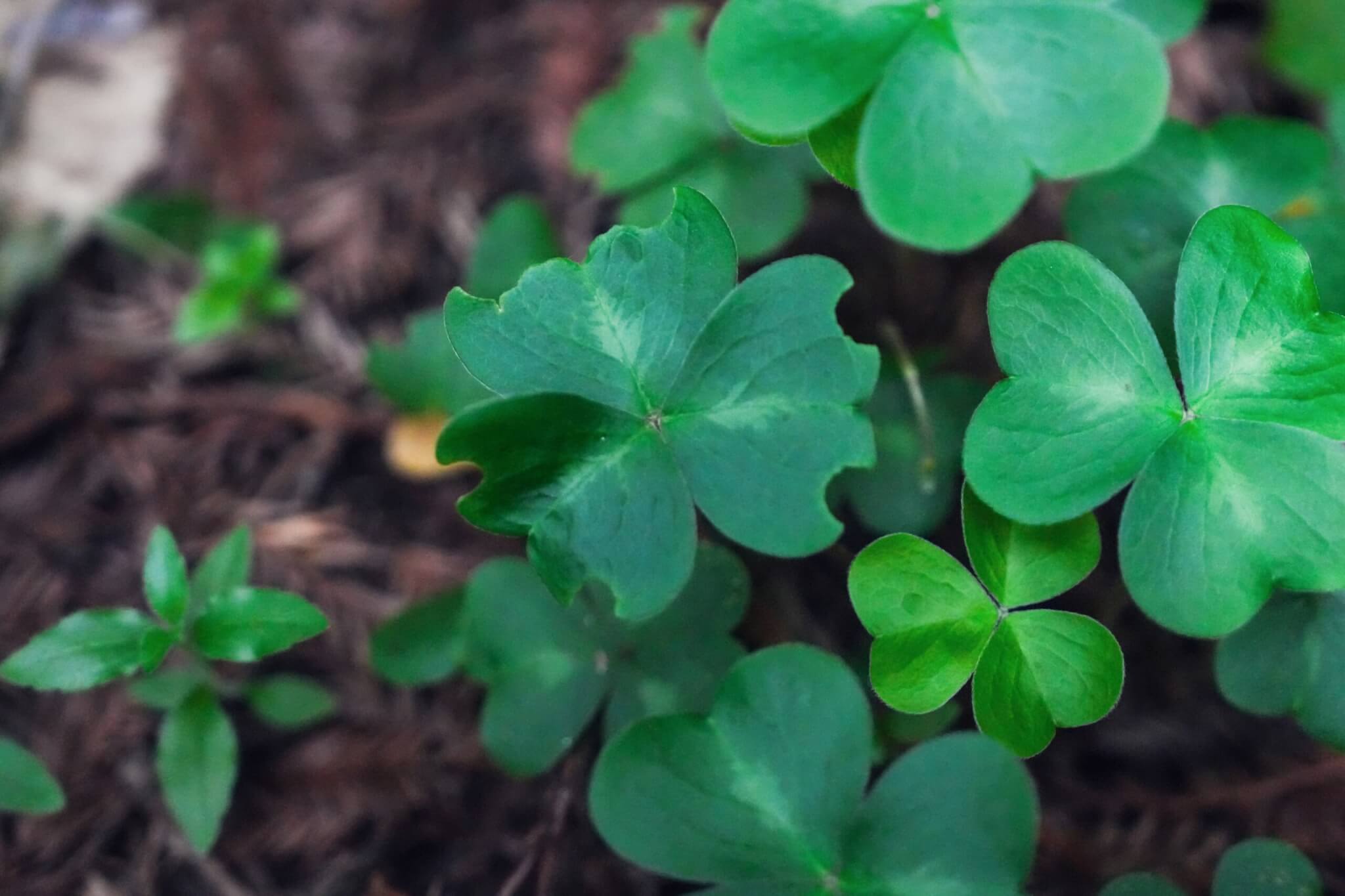

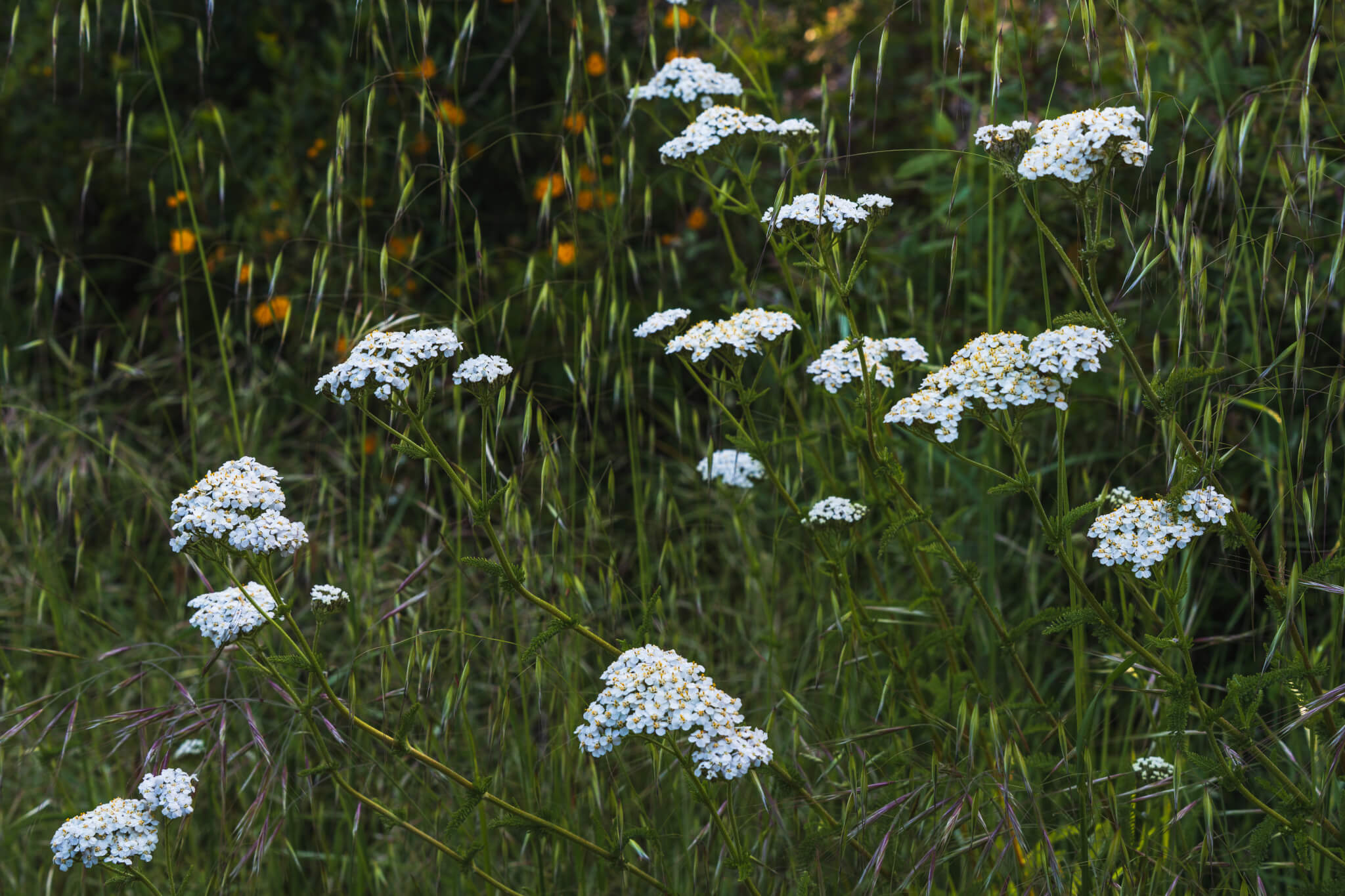
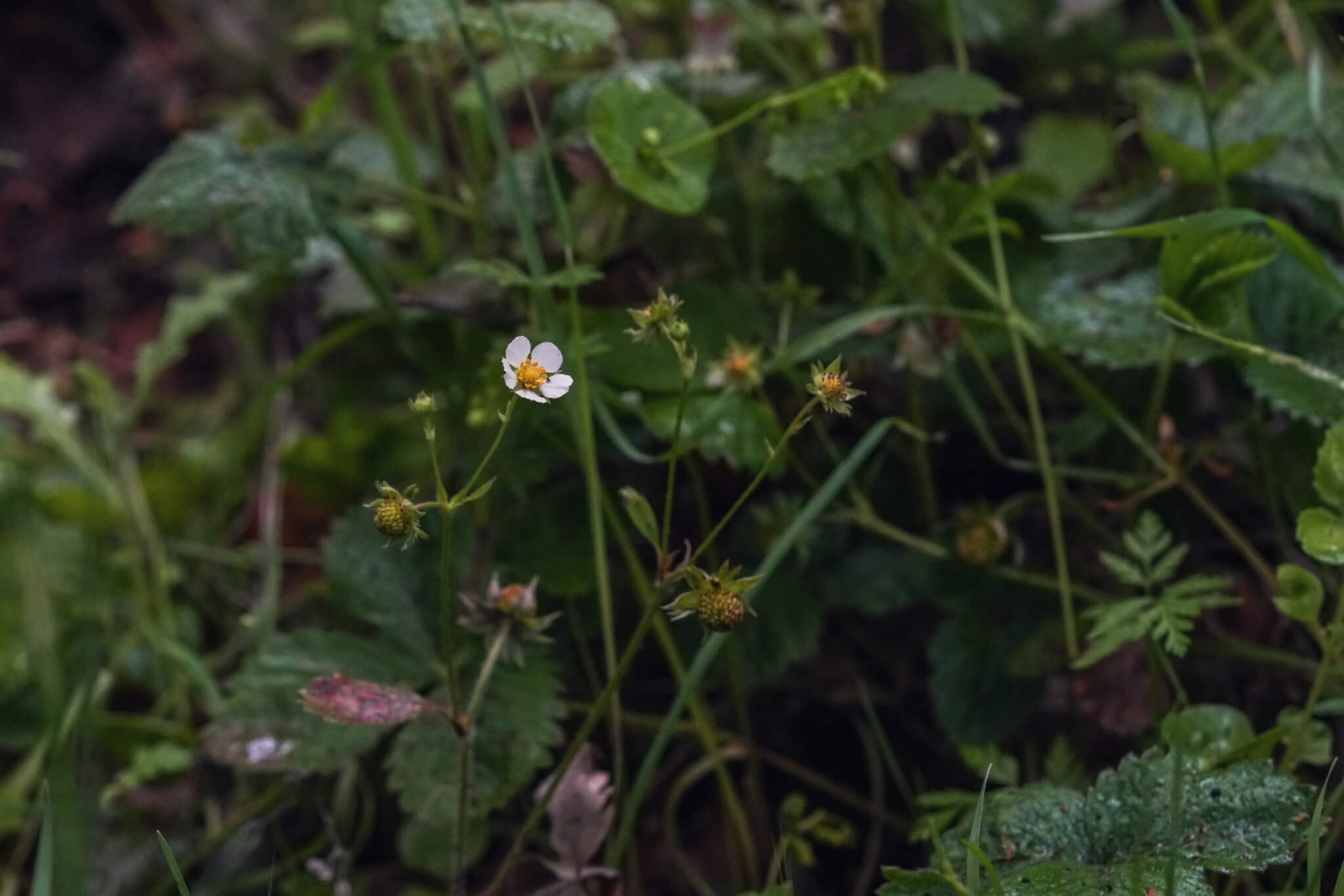
Securing a Botanical Balance
Once visible invasive plants are removed, the work of restoring native plants in their place begins. ECI does this by carefully collecting seeds of existing native plants in the meadow, growing them in their nursery, and then reestablishing the seedlings back in the meadow. ECI believes in the importance of using site-specific, or at least watershed-specific, seeds to ensure compatibility and viability within the existing ecosystem. Another school of thought has others in the field testing the practice of using seeds from warmer climates to reseed areas experiencing warming, because they fear climate change will outpace the plants’ ability to adapt to warming trends. The experts will be watching results of differing approaches play out in real time, influencing our and our partners’ stewardship efforts for years to come.
At Castle Rock Hollow, our stewardship work in the meadow and in the surrounding redwood forest is not a one time activity - it is ongoing. French broom and bamboo are hardy and grow rapidly, which means new shoots in cleared areas of the meadow will need to be pulled regularly. As the meadow is reseeded and reestablished with native cover, we will also be using maps from these detailed botanical surveys to create short and long term restoration plans for each small parcel, including rewilding of dirt roads and tracks and removal of evidence of structures across the property. With a comprehensive understanding of the individual zones on this parcel of land and their individual needs, we can steward the land to a natural, sustainable state. At that point, we’ll be ready to pursue a handoff to California State Parks so that Castle Rock Hollow can be where it belongs - seamlessly integrated into the majestic Castle Rock State Park that surrounds it.
What Comes Next
Is this painstaking investigation and restoration work worth the effort? “We believe we have a role in restoring and protecting native lands for the benefit of the plants and animals that live there and for the benefit of the people who seek their own restoration in these spaces,” said Lopez. Across California, and through a robust network of stewardship professionals in the Santa Cruz Mountains, this level of inquiry, deliberate interventions, monitoring, and analysis is giving Sempervirens Fund and our partners robust data about how best to support natural systems recovering from human impacts. Paired with county and state programs that incentivize nature-based solutions, conservation, and forest resilience, we believe that every acre of active management will have far greater benefits across the region’s interconnected systems.
All of these conversations and so many more were part of the deep dive that was the Castle Rock Hollow botanical survey. Our work preserving and protecting the redwood forests of the Santa Cruz Mountains can sometimes feel just as complex as the natural systems that sustain these forests! As Sempervirens Fund celebrates 125 years of stewarding these lands, our commitment remains as strong as ever to the preservation in perpetuity of these marvelous forests and their sustaining ecosystems for generations to come.
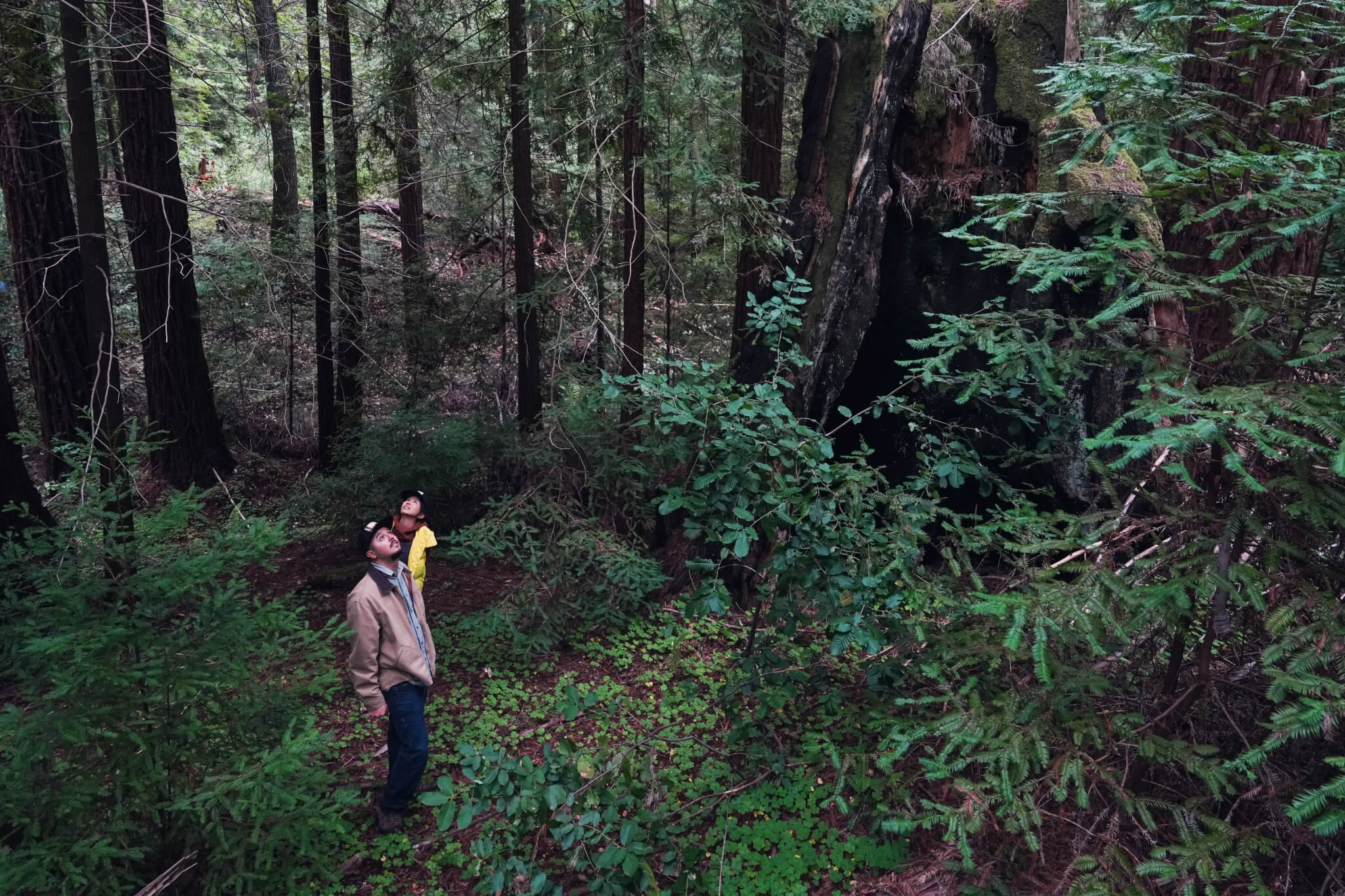
More to Explore
- Learn more about how we're Growing Old-Growth today for tomorrow.
- Explore how we are Caring for the Land across the Santa Cruz Mountains.
- Visit Castle Rock State Park.
1 Sempervirens Fund intentionally uses the term stewardship, rather than management, to describe our work. Stewardship recognizes the collaborative, culturally aware ways that we work to preserve and protect redwood forests; management implies top-down control. Stewardship also affirms our holistic approach, and recognizes the importance of not just the redwoods themselves, but the watersheds, understory, and entire ecosystems that nurture them.
2 ECI is a habitat restoration firm, ecological landscape contractor, biological consulting firm, and California native plant nursery whose expertise has been incredibly helpful to us when restoring land after commercial use.

